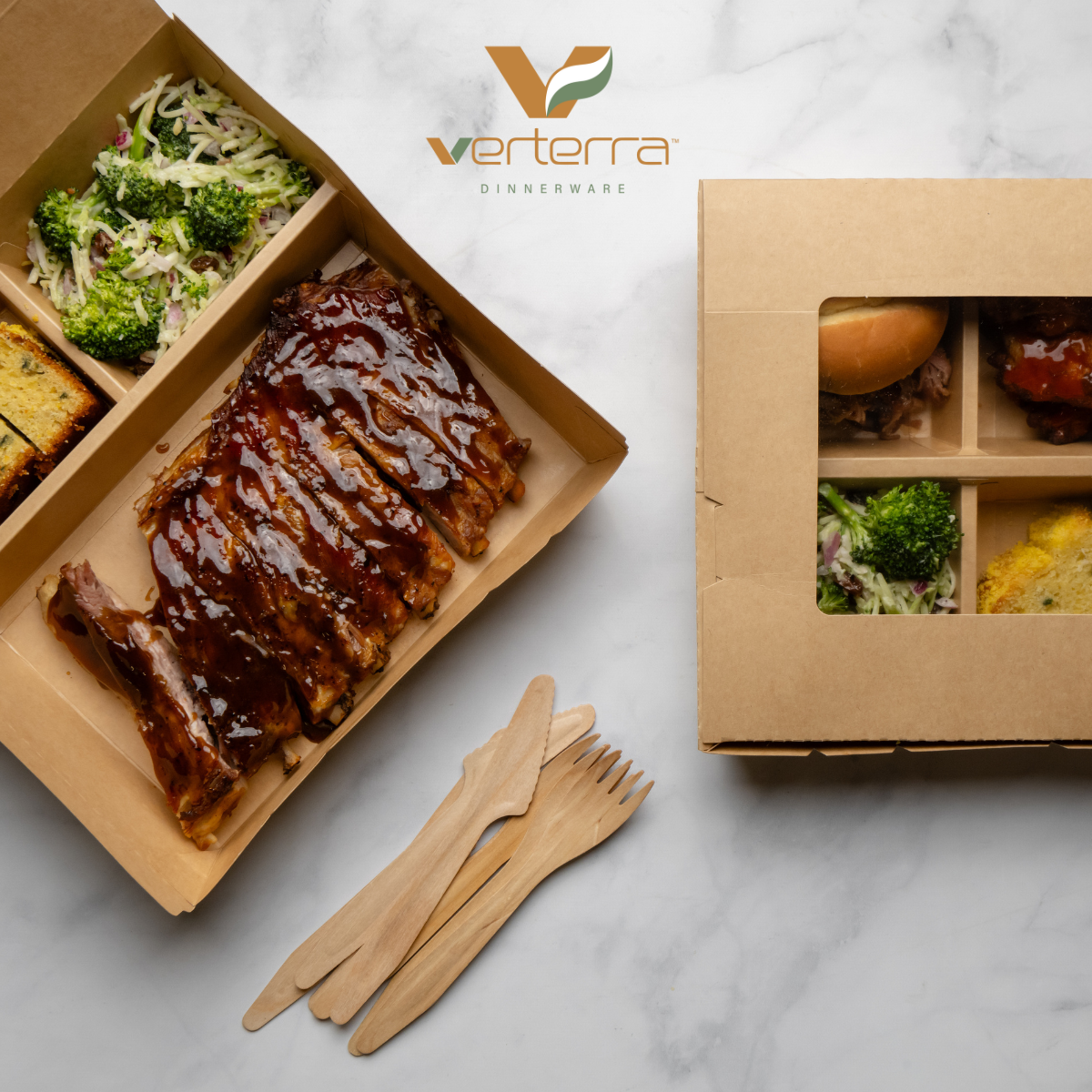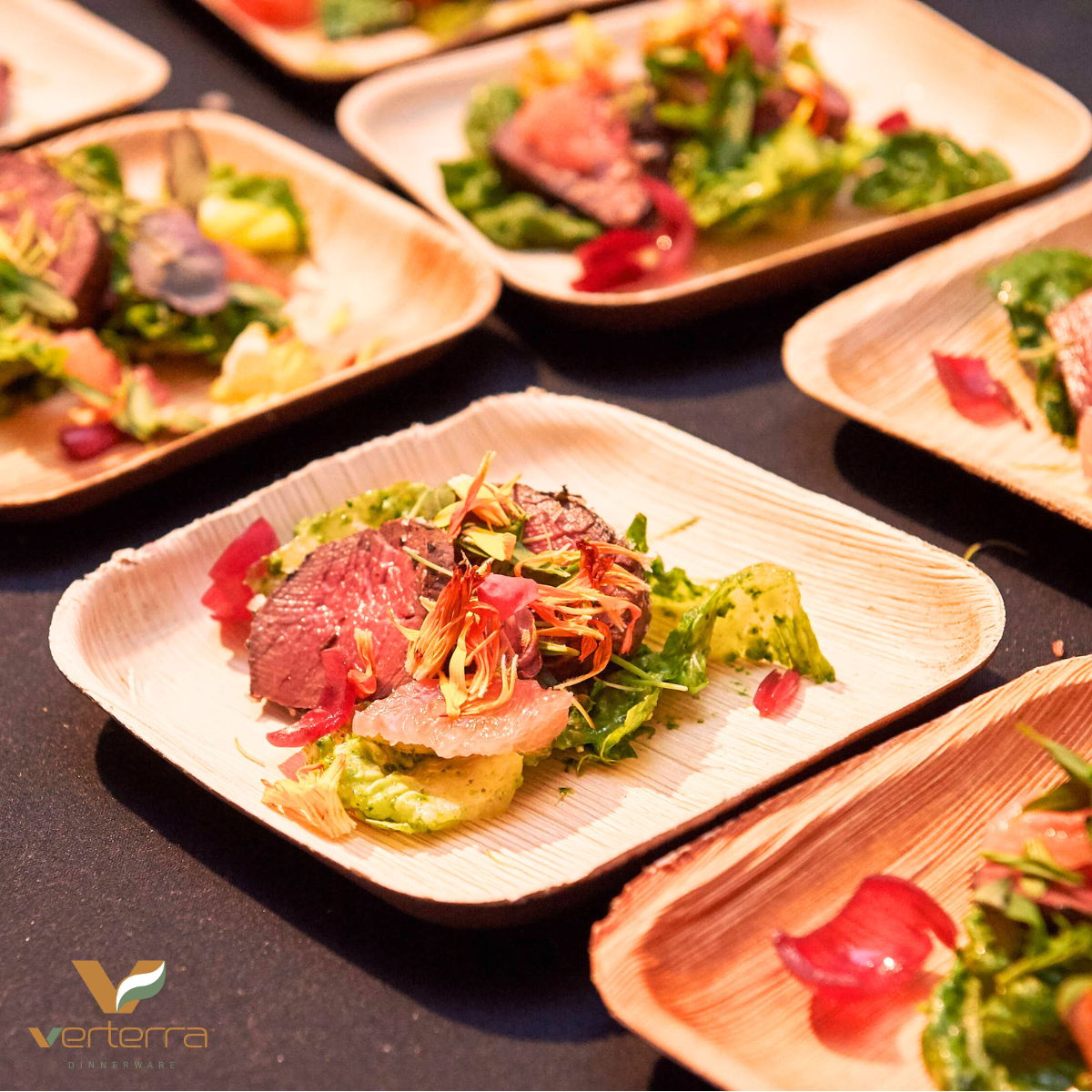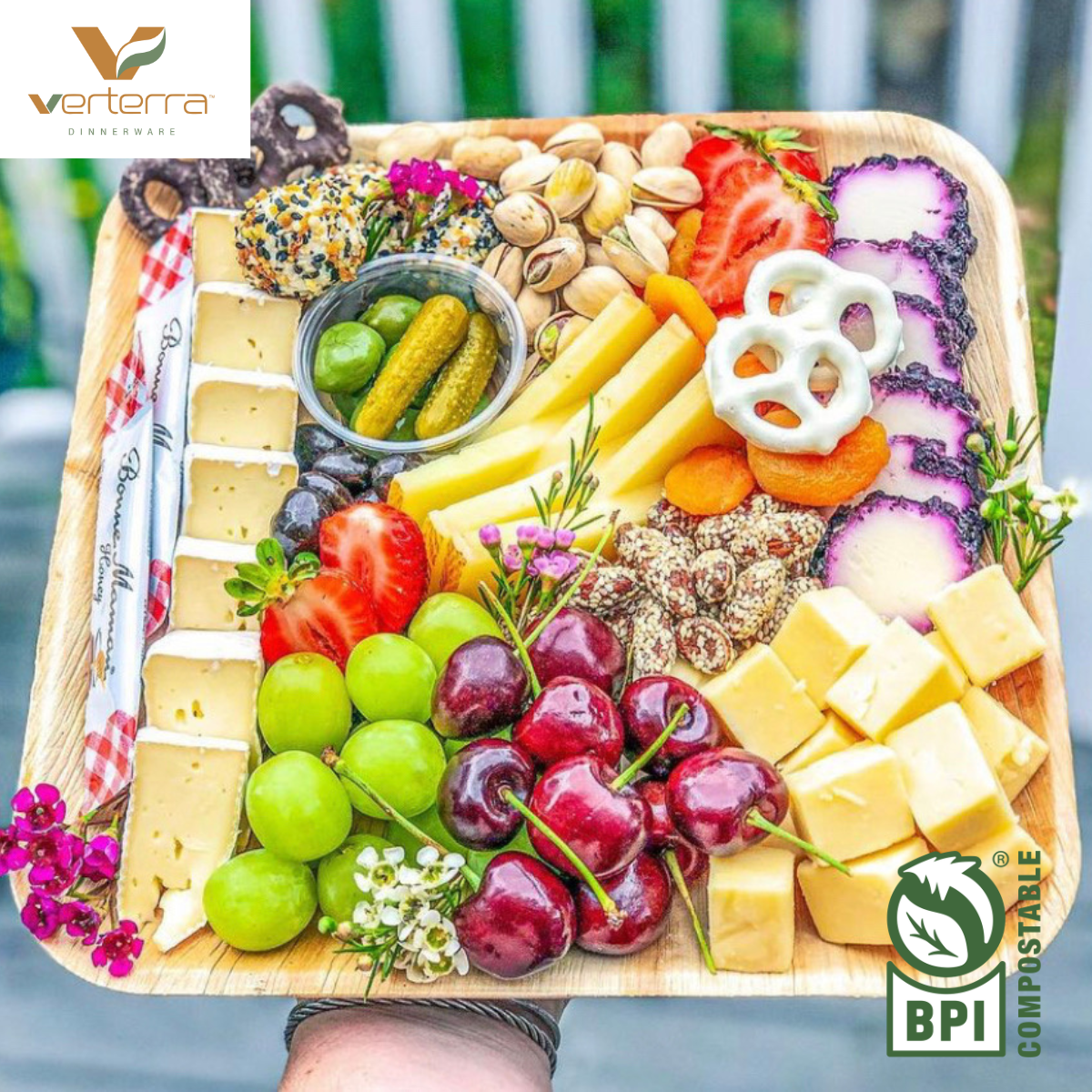
Disposable Luxe: How Compostable Tableware is Reshaping the Event Industry
Gone are the days when disposable meant flimsy, boring, and environmentally careless. In 2025, today’s event professionals are embracing “disposable luxe”—a fast-growing movement that combines elevated aesthetics with eco-conscious choices at affordable prices, making sustainability not just a requirement, but a statement.

The Eco-Conscious Caterer’s Toolkit: Essentials for Modern Events
Clients are no longer just asking what’s on the menu—they’re asking how it’s being served. Today’s tastemakers want elegant, low-waste events that impress guests and align with their values. That’s where Verterra comes in.
In this blog, we break down exactly how to create a stunning, sustainable setup using just five compostable essentials. Whether you’re catering a backyard tasting or a high-end corporate soirée, this is your go-to guide for effortless eco-luxury.
🌿 Sustainable never looked so good.

The Ultimate Guide to Food Boats
Food boats are more than just a convenient way to serve meals—they're a game-changer for eco-conscious food service businesses. From casual cafés to high-end catering, these biodegradable, stylish, and durable containers offer a sustainable alternative to plastic. But not all food boats are created equal. Verterra takes it to the next level with their innovative, chemical-free designs made from renewable materials like kraft paper and balsa wood. Want to know why top chefs and event planners choose Verterra? Read on to discover the ultimate guide to food boats and how they can transform your food presentation while protecting the planet.

Sustainable Elegance: Why Verterra’s Covered Catering Trays And Grab & Go Trays Are a Culinary Game-Changer
If you’ve ever hosted an event, run a restaurant, or catered a wedding, you know how important it is to balance practicality with presentation. That’s where Verterra’s covered trays come in—a line of sustainable, compostable trays that deliver on functionality while looking absolutely stunning.

The Future of Food Packaging: Why Compostable is the New Standard
As the global focus on sustainability intensifies, food packaging has emerged as a critical area for innovation. Consumers, businesses, and policymakers are increasingly demanding eco-friendly solutions to mitigate environmental harm caused by single-use plastics. Compostable products, like those offered by Verterra, are setting a new standard for food packaging, blending functionality with sustainability. This shift isn't just a trend—it’s a necessity driven by consumer expectations and environmental realities.

Reducing Operational Waste in Hospitality: The Business Case for Compostable Disposables
The hospitality industry faces increasing pressure to embrace sustainability, driven by environmental regulations, consumer preferences, and rising waste management costs. For hotels, stadiums, and catering businesses, transitioning to compostable disposables offers not just environmental benefits but also tangible operational and financial advantages.

Palm vs. Bamboo Plates: Why Palm Wins for the Planet, But Bamboo Has Its Place
When it comes to eco-friendly tableware, palm and bamboo plates often top the list. Both offer compostable, natural alternatives to plastic or Styrofoam, but which one truly leads the charge for sustainability? In this article, we’re diving into the pros and cons of palm and bamboo plates, comparing their environmental impact, production processes, and ideal uses. Spoiler alert: palm plates come out on top for the planet when it comes to plates, but bamboo has its own shining moment too.

Sustainability as a Selling Point: How Compostable Tableware Can Elevate Your Restaurant’s Brand

Microplastics: The Invisible Pollutant and How We Can Fight Back
The conversation about plastic pollution often brings to mind the image of floating bottles and bags in the ocean. But one of the most pervasive and insidious forms of plastic pollution is nearly invisible: microplastics. These tiny fragments of plastic are everywhere—from the depths of the ocean to the air we breathe. As awareness of microplastics grows, so does the urgency to address this pollution. In this blog, we’ll break down the basics of microplastics, explore their environmental impact, and discuss solutions. Plus, we’ll dive into how companies like VerTerra are part of the solution by offering sustainable alternatives to single-use plastics.

Transforming Campus Dining: Sustainable Solutions for Colleges and Universities

Enjoy Guilt-Free Outdoor Dining with Verterra's Collapsible Boxes

